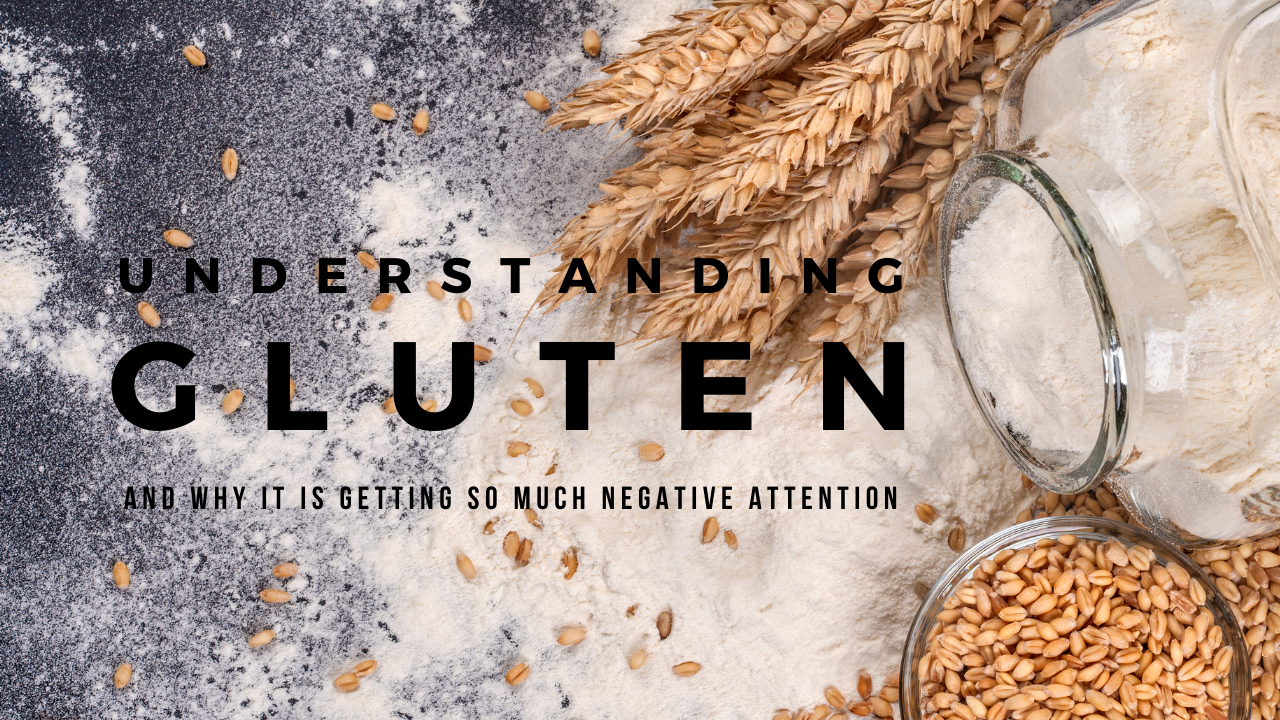
Going Gluten Free
May 13, 2020Gluten has gotten a lot of negative attention over the last few years. But why is it so common for gluten to trigger GI distress?
Gluten Intolerance
Gluten is actually a group of sticky proteins - gliadins and glutenins. Gluten acts as a “glue” to help hold food together and maintain its shape. Gluten also plays a role in the leavening process. When mixed with yeast, it contributes to the bread “rising”.
So what’s the big deal? Why is gluten catching a lot of heat lately? Isn't it only a negative for people with Celiac's disease? Not really. While Celiac disease is an autoimmune disorder that affects the mucosal lining of the small intestine and initiates an immune response, people can have an actual allergy or sensitivity to wheat, gluten or gliadin without having Celiac’s disease 1.
So why does it seem like more people are negatively affected by gluten? Well, for starters, many people are walking around with a compromised gut due to years of not fueling their bodies properly. On top of that, the gluten from wheat that many of us are consuming today has been hybridized to be bigger, grow faster, and withstand pesticides and herbicides. Pesticides can negatively impact our microbiome and also upregulate zonulin.
Zonulin is a protein that moderates our intestinal tight junctions. Gluten can also upregulate the protein. When the tight junctions are weak, the immune response increases, and undigested food particles, toxins, and bacteria can leak into our bloodstream. This is also known as leaky gut. In addition to gluten, candida, pathogenic bacteria, and parasites can also upregulate zonulin and contribute to leaky gut. Leaky gut is commonly associated with autoimmune disorders as well.
As Dr. Pearlmutter mentions in his book The Grain Brain
It helps to understand that food sensitivities in general are usually a response from the immune system. They can also occur if the body lacks the right enzymes to digest ingredients in foods. In the case of gluten, its “sticky” attribute interferes with the breakdown and absorption of nutrients. As you can imagine, poorly digested food leads to a pasty residue in your gut, which alerts the immune system to leap into action, eventually resulting in an assault on the lining of the small intestine. Those who experience symptoms complain of abdominal pain, nausea, diarrhea, constipation, and intestinal distress.
When something appears as something it’s not…..
Molecular mimicry occurs in the body which can also lead to autoimmune disorders as well. With molecular mimicry, the protein sequence of certain foods closely resembles the protein sequence of self. While the body is working overtime to reduce inflammation, it may mistake healthy tissues for a gluten protein and begin destroying those healthy cells. This is very common with Hashimoto’s Thyroiditis because gluten and dairy are very similar in structure to thyroid cells. Supporting your body and decreasing the inflammatory foods you are consuming can have many benefits to supporting an autoimmune disorder. I will often support clients through at least 30 days of an Autoimmune Paleo diet and slowly reintroduce foods as we transition to a Paleo lifestyle.
What Foods Contain Gluten
Gluten, surprisingly, can be found in more than just food! It can be in personal care products such as lip gloss or lip balm, shampoo, body wash, and lotions. Gluten can show up in medications and supplements. Gluten can also be in alcoholic beverages. Here’s a quick list to help you navigate the obvious and sneaky places gluten might be hiding.
Traditional Gluten-Containing Foods (this list may not be inclusive)
-
Wheat
-
Spelt
-
Farro
-
Rye
-
Barley
-
Malt
-
Pasta/Noodles
-
Couscous
-
Pastries
-
Crackers
-
Cereal
-
Granola
-
Breadings, Coatings, or Batters
-
Panko
-
Soy Sauce
-
Sauces and Gravies
-
Brewer’s Yeast
Gluten May Exist in These Foods (this list may not be inclusive)
-
Seasonings
-
Lunch Meat
-
Candy
-
Soup/Broth
-
Tortillas and Tortilla Chips
-
Seitan
-
Imitation Meat
-
Salad Dressing and Marinades
-
Oats
While that may seem like a long list, there have been many advancements and demands for those needing or wanting to follow a gluten-free diet. To actually be considered gluten-free by the FDA, it must contain 20ppm of gluten or less. Reading labels is really important to make sure that you are truly avoiding gluten if that is your desire. It is also important to note that while something may be wheat-free, it does not necessarily mean that it is gluten-free.
Gluten-Free Options (this list may not be inclusive)
-
Amaranth
-
Rice and Rice Flour
-
Almond Flour
-
Coconut Flour
-
Cassava Flour
-
Corn
-
Corn, Tapioca, or Arrowroot Starch
-
Guar Gum
-
Quinoa
-
Buckwheat
-
Potatoes
-
Sorghum
-
Teff
-
Tamari or Coconut Aminos
-
Chickpeas
-
Flaxseed
Following a gluten-free diet can definitely feel overwhelming at first! Many find that through the simple process of elimination or doing an IgG food sensitivity test, they feel much better without gluten in their diet. I teach my clients that there are actually a lot of really good options available. You just have to think a little outside of the box and actually read the labels of the foods you are purchasing.
Are you overwhelmed by all of the conflicting information regarding health, hormones, nutrition, and weight management?
Join me once a month for a FREE "Ask Me Anything" live Zoom sesh! I'll answer all the questions you've been spending so much time searching the internet for.









